Face it, taking a shower is a necessity, at least in our case. At some point in the lifetime of ownership Shower plumbing repair will be necessary. Some people take shortcuts, but, sooner or later, the problem will likely happen again and sometimes worse. Below are a few tips that will help you maintain your shower and make not-so-simple repairs simple.
Thread Sealer is a Lifesaver.
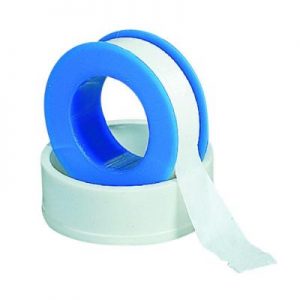 Thread sealer is an available, and, a simple solution. The most common option is the blue and white roll of stretchy Teflon tape. It’s designed to be placed around the threads before the shower head is connected. Similarly, pipe dope can be applied, but, this option can be messy if you don’t know what your doing. Unless there is a gasket installed, threaded joints can leak when thread sealer isn’t used, and, if the thread leaks behind a wall, you may have to tear part of the wall out later to repair the damage. Thread sealer is inexpensive, and is something that is good to have lying around in your toolbox.
Thread sealer is an available, and, a simple solution. The most common option is the blue and white roll of stretchy Teflon tape. It’s designed to be placed around the threads before the shower head is connected. Similarly, pipe dope can be applied, but, this option can be messy if you don’t know what your doing. Unless there is a gasket installed, threaded joints can leak when thread sealer isn’t used, and, if the thread leaks behind a wall, you may have to tear part of the wall out later to repair the damage. Thread sealer is inexpensive, and is something that is good to have lying around in your toolbox.
Caulking is Perfect for Shower Leaks.
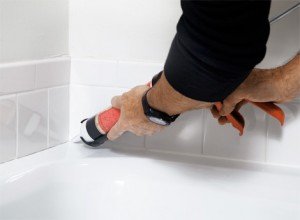 Caulk will help seal the areas around fixtures that can create problems with water leaks and it can also cover old colors. Not using sufficient caulk can cause gradual leaks that will result in greater harm eventually. Make sure to dig out and remove existing old caulking, and as a general rule of thumb, it’s always best to use too much than not enough. Be sure to apply generous amounts of caulk to the escutcheons, fixtures, and anything else you don’t water getting behind that will eventually cause mold and bacteria to form.
Caulk will help seal the areas around fixtures that can create problems with water leaks and it can also cover old colors. Not using sufficient caulk can cause gradual leaks that will result in greater harm eventually. Make sure to dig out and remove existing old caulking, and as a general rule of thumb, it’s always best to use too much than not enough. Be sure to apply generous amounts of caulk to the escutcheons, fixtures, and anything else you don’t water getting behind that will eventually cause mold and bacteria to form.
Check for Leaks First Before Buttoning Up that Hole.
If you’ve had to fix any plumbing behind a wall, don’t rush to close the wall up until you know there are no leaks. A simple pressure test can be the difference between making a easy job harder than it has to be. Just open the diverter valve and rotate it from hot to cold. Do this over several times. This will allow you to see any leaks and correct them before you close the wall up.
Primer and Glue: They Go Together.
PVC pipes are used very commonly in a bathroom. This cost-effective and efficient method requires a sealant as well. A primer needs to be applied before glue is applied when doing any kind of joining or repair work on PVC. The primer allows the pores in the plastic to open up. This allows the glue to penetrate more deeply, forming a tighter bond. Any hardware or home improvement store will carry primer and glue specifically for PVC applications. Look for brands like Oatey, Locktite, and Gorilla.
Install Shut Offs in More Than One Place.
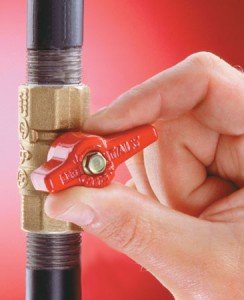 If you need to repair something in the bathroom, you will find it is a hassle to turn the water off to the entire house. Other members of the household may need to use another bathroom, run water in the kitchen, etc. By installing a shut off just for the shower, you can avoid needing to turn off the water to the whole house. This will allow you to take your time when you need to work on anything in the bathroom without being rushed by family. Install shut offs, your loved ones will thank you.
If you need to repair something in the bathroom, you will find it is a hassle to turn the water off to the entire house. Other members of the household may need to use another bathroom, run water in the kitchen, etc. By installing a shut off just for the shower, you can avoid needing to turn off the water to the whole house. This will allow you to take your time when you need to work on anything in the bathroom without being rushed by family. Install shut offs, your loved ones will thank you.
Buy a Pipe Wrench. It is Super Helpful.
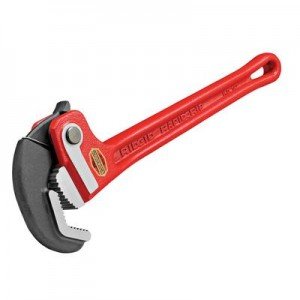 So many people use the wrong tool and damage their pipes and shower heads. A pipe wrench is designed to be able to get in to tight areas without much effort. These are inexpensive tools, and can be easily stored in a toolbox or a closet. Having a pipe wrench will not only make the job easier, it will also lessen the chance of damaging a pipe just by trying to get to it. If you don’t already own one, add a small pipe wrench to your “to buy” list, now.
So many people use the wrong tool and damage their pipes and shower heads. A pipe wrench is designed to be able to get in to tight areas without much effort. These are inexpensive tools, and can be easily stored in a toolbox or a closet. Having a pipe wrench will not only make the job easier, it will also lessen the chance of damaging a pipe just by trying to get to it. If you don’t already own one, add a small pipe wrench to your “to buy” list, now.




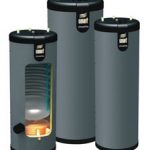


Comments